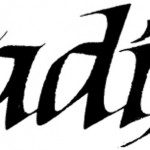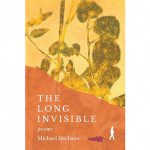Tyger, tyger, burning bright
In the forests of the night …
Did he who made the lamb make thee?
An interesting thing happens to many writers the first time they write a story with foul language, erotic scenes, butcher knives dripping with blood, or characters with twisted psychologies: they have to show their story to their mothers.
Family and friends have expressed all varieties of horror and revulsion at some of my stories. The sex was too explicit, the obscenities too strong, the imagery too grotesque. Upon reading my novel, my mother speculated that I was in a state of depression. (She’s since changed her mind.)
It may be a question that primarily conservative Christian writers struggle with: is it OK to include these things in fiction? I want to suggest a way forward, and God himself is our example.
 What do we make of the fact that the God, whose grace is amazing, whose love is like a fountain, and whose mercies are new every morning, also created tigers—majestic and spectacularly-engineered killing machines, shockingly efficient at ripping up other creatures?
What do we make of the fact that the God, whose grace is amazing, whose love is like a fountain, and whose mercies are new every morning, also created tigers—majestic and spectacularly-engineered killing machines, shockingly efficient at ripping up other creatures?
Consider that the God who made bunnies and kittens also made jackals and warthogs. He who rejoices over his people with singing, who we call “Abba, Father” also called forth, in the splendor of his creative expression, vultures, tapeworms and cobra venom.
The Bible says to imitate God. Can artists imitate God’s audacity in their creative expression?
Imagine for a moment that you set out to create a bunch of new animal life by the word of your power. You create thousands of species. You are yourself: a normal, churchgoer in muted earth tones and sandals. You try to love your neighbor. You attend a D-group (or whatever) almost fifty percent of the time. You make hard ethical decisions in your workplace. You are washed in the blood.
You are also an omnipotent creator of animal life, and you want to make creatures that you think will honor God, the way any Christian artist thinks about his art.
Would you, in the highest outpouring of your sanctified artistic muse, ever create an animal with the eyes and hair and fangs of an Australian mouse spider? Or the panic-inducing horror of a deathstalker scorpion? Or one of those freakish, toothy deep-sea fishes?
More to the point, would you artfully fashion hideous and deadly beasts to offer up as the work of your hands before the throne of grace, tokens of your love and gratitude?
 It’s easy to see God’s nature mirrored in our dogs and cats. I have reflected many times on the symmetry between my relationship with my dogs Beans and Miller, and God’s relationship with me.
It’s easy to see God’s nature mirrored in our dogs and cats. I have reflected many times on the symmetry between my relationship with my dogs Beans and Miller, and God’s relationship with me.
But when I see those close-up photos of a fly or a wasp, those eyes like huge, convex screens of red Kevlar, the mechanical segmented body, thorny legs, a tubular, organic proboscis, I realize: If God made this, then I don’t know God as well as I thought I did.
It’s a common experience for writers to fear that writing shocking or scandalous material will cause their friends and family to worry about them. “Oh, come on, Jeffrey. Do you really need to drag us through that? Why can’t your story be more uplifting? Life is ugly enough.”
But our own theology of creation helps us here. Which of us is honest enough to look at a shark, its multiple rows of serrated teeth perfect for obliterating just about any creature under the sea, and then say, “Gee, Lord. That’s not very loving. What happened to the grace, man?” Which of us would say to God, “Come on now, Lord. Life is ugly enough without creating such creatures. Don’t you want us to be happy and joyful? Why put us on the same planet with venomous biting things?”
I have heard people appeal that predatory behavior is the result of The Fall in Genesis 3. Meat-eating, they say, is part of God’s curse on the earth. Lions and hyenas and vultures were herbivores before The Fall.
But I don’t buy it. That’s not what the Bible says. Plus it’s totally lame. God made ferocious animals as they are, claws, teeth, stingers and all, and Psalm 19 is clear. Sharks and fire ants declare the glory of the Lord.
Most Christian devotional culture today focuses on the loving, forgiving, passionate-lover, mighty-healer, cuddly-father side. But I think a little reflection on some of these decidedly non-cuddly animals may reveal a certain lack of depth of this vision of God. Is this the same God who made such vicious and revolting creatures?
So, artists and writers…
this gives us boldness to explore the hideous, the erotic, and even the blasphemous in our own work. The Bible itself contains blasphemy coming from the mouth of Job. I’m not saying a latrine on the wall is art, but I am saying that a song about drug addiction or fantastic sex might be. And as a viewer of art, the diversity of God’s own creative palette teaches me to engage and appreciate expressions of culture that are not necessarily to my taste. Perhaps that’s very postmodern of me. But hey, God made naked mole rats and monkfish as well as Arabian horses and bald eagles. And he said it was all “very good.”







